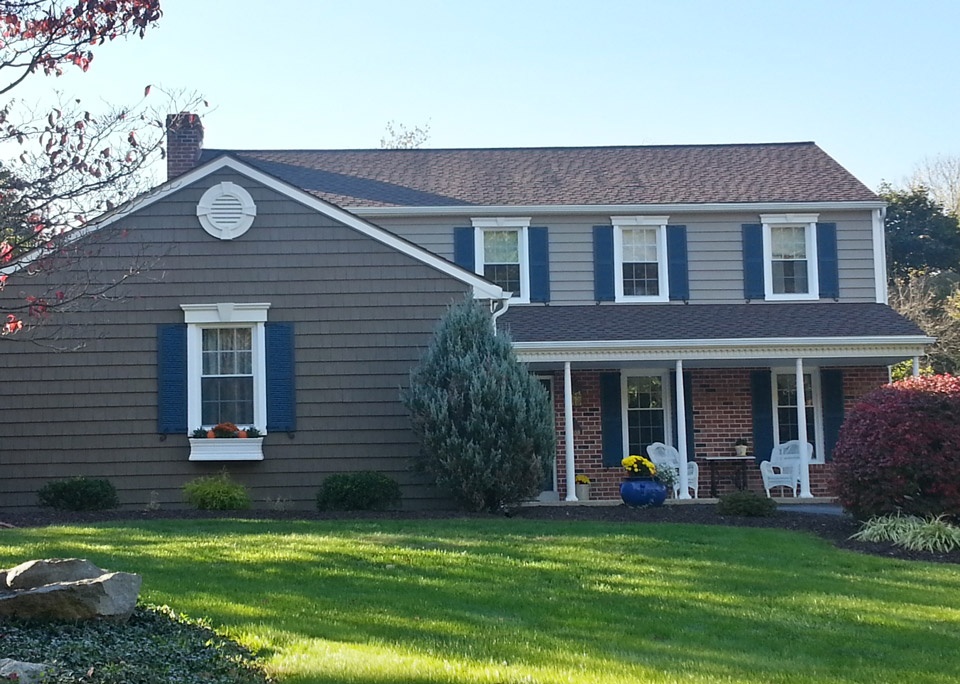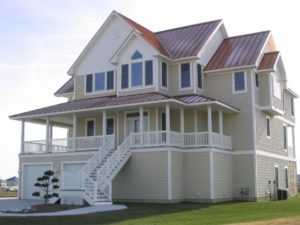
There’s been a lot of rough weather around Pennsylvania this year, so ensuring your roof is in good shape should be a priority. Here are some tips for identifying problems with your roof and signs you may need to repair or replace it.
Sign #1: The Shingles Don’t Quite Look Right
Shingles are a good indicator of the health of your roof. Keep your eyes peeled for signs of wear like:
- Shingles that Don’t Lay Flat: Shingles that appear curled, buckled, cracked, or cupped indicate that they are worn out.
- Missing Granules: If you look closely at a new shingle, you will see small particles that look like sand stuck all over them. If your shingles start to develop “bald spots” or areas with no granules, that indicates that they need to be replaced. Often, loose granules end up in the gutter, so check your gutters for excess particles.
- Moss Growing on Roof: Moss can cause damage over time by holding moisture against your roof, we recommend you take action now. You can brush the moss off, but be careful not to damage the shingles. Also, keep in mind that removing the moss will not prevent it from growing back. You should contact a professional if you notice excess moss on your roof.
- Dark Streaks: These can be a sign of airborne algae. While not necessarily damaging, algae streaks don’t look great. Try removing them with a 50:50 blend of water and bleach. When you rinse it off, make sure you use a low-pressure hose, so as not to damage the granules on your shingles or knock them loose. Also, bleach can be harmful to your landscaping, so be careful.
Sign #2: The Roof is More Than 20 Years Old

Most asphalt shingle roofs need to be replaced every 20 years. A metal roof, like the one shown here, can last as long as 75 years.
Most asphalt shingle roofs need to be replaced every 20 years or so. It’s a good idea to track down your home records to find the last time it was reshingled.
Of course, if you have a different type of roof, you can expect a different life span. Flat rubber roofs need to be replaced every 15 years or so, while metal roofs can last up to 75 years.
Sometimes, your neighbors can give you a clue. Chances are, their houses were built around the same time, so if they’re getting their roofs replaced, there’s a good chance you should too.
Sign #3: The Roof is Leaking
Even if you haven’t noticed any leaks inside your home, it’s a good idea to inspect your home for less obvious signs.
The first place to check is the attic. If you catch any beams of light or streaks or stains, that can be a sign of a leaky roof.
It isn’t a bad idea to inspect your flashing while you’re at it. Most leaks occur in the seams of your home, areas like vents, skylights, and chimneys. Look over those and make sure there aren’t any cracks or breaks–those can lead to leaks.
Sign #4: The Roof Has Been Hit By a Recent Storm
Hail, snow, and even heavy rains can do a number on your roof. It’s a good idea to inspect it after a big storm for signs of damage.
Trust Milanese When Replacing Your Roof and Siding
If you decide it’s time you replace your roof, in many cases, it makes sense to replace your siding, too. Check out the benefits of crossing both off your list at one time. If you still are not sure about the condition of your roof, contact us today for a free estimate. We have helped many homeowners improve their homes and would love to do the same for you.